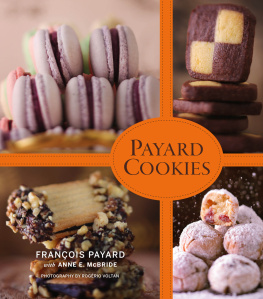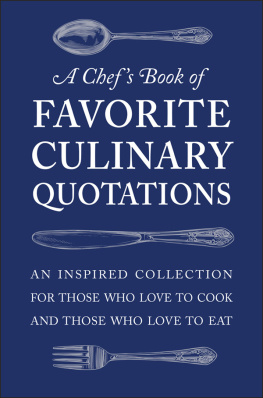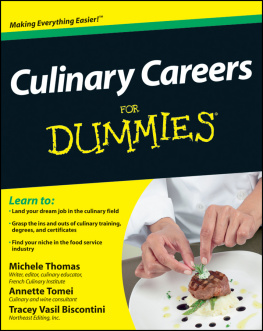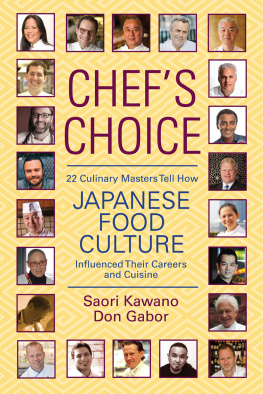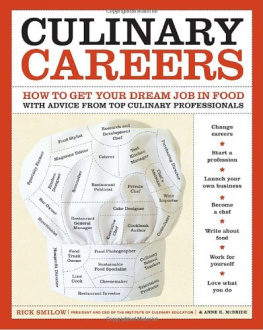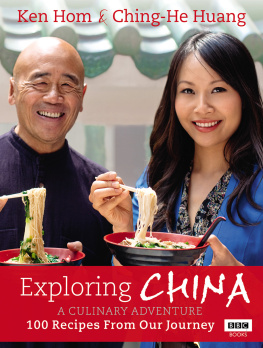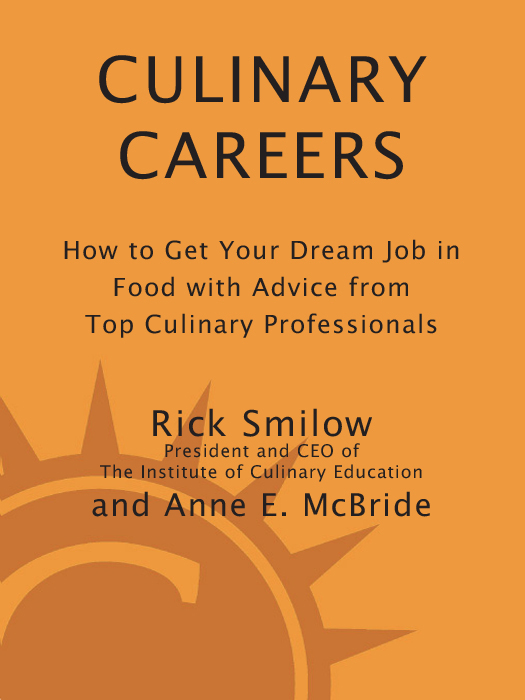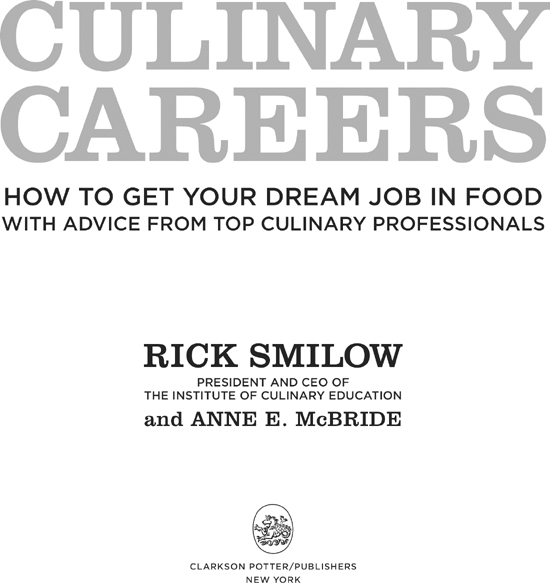CONTENTS
PART I
PART II
INTRODUCTION
W orking in the food industry is no longer only a plan Bit has become a career ofchoice.You can proudly walk up to your parents and tell them that you are going to culinary schoolthey might even pay for it. You can let go of your corporate job to work in a restaurant and have the support, and even the envy, of your friends.

Your signature recipe can become a product sold in every supermarket. The new celebrities are found not on sitcoms but on televised cooking shows. Dining out rivals the theater as a stand-alone leisure activity. Food personalities have become moguls of multimedia empires. Food movies like Ratatouille and Julie & Julia are as important to Hollywood as action flicks and romantic comedies. In such a wide-open field, there truly are no limits to what you can accomplish and to how many people can accomplish it.
All these developments mean that you can follow a plethora of career paths if you want to work in a food-related field, regardless of the level at which you wish to enter the industry or switch jobs. But the options are not always obvious. Food plays a role in so many areas that it can be hard to find out exactly what job would be best for you and how to go about obtaining it. What degrees do you need? What will be your first job? What do you do in a certain job?
From my position as president of the Institute of Culinary Education (ICE) in New York City, I have a birds-eye view of the spectrum of jobs, activity, and development in Americas culinary scene. ICE offers a vast array of courses and programs; throughout the year, I meet chefs, chocolatiers, caterers, beverage managers, restaurant owners, cheesemakers, private chefs, sommeliers, food journalists, and on and on who come to ICE to teach or speak, or for a cornucopia of other reasons. Meanwhile, our graduates have gone on to hold all sorts of coveted food jobs, from the assistant director of operations at Daniel Bouluds global company Dinex Group to a producer at Martha Stewart Living Omnimedia. From talking to professionals in all aspects of the industryasking them to tell us about their education, career path, and day-to-day activities in their current jobAnne and I have gathered a wealth of information to share with those interested in pursuing cooking and food. Culinary Careers is a comprehensive guide to help youstudents, career changers, prep cooks looking to move up, weary chefs in need of a new way to use their skills, budding food writers, or aspiring winemakersgo about your job search and learn more about the industry as a whole.
Our culinary elitesthe chefs, cookbook authors, cooking-school instructors, purveyors, and food writers who lead the wayare suffused with feelings of boundless possibility, having liberated themselves from the old strictures and prejudices that hemmed in their predecessors.
DAVID KAMP,
The United States of Arugula
Americas Love Affair with Foodsome Milestones
1959 The Four Seasons opens in New York, NY
1961 Julia Childs Mastering the Art of French Cooking, volume one, is published
1963 WGBH in Boston airs Julia Childs The French Chef
1966 Julia Child appears on the cover of Time
1971 Alice Waters opens Chez Panisse in Berkeley, CA
1971 The Culinary Institute of America starts offering associates degrees
1972James Beards American Cookery is released
1973 The Cuisinart is introduced in the United States
1975 Peter Kump begins teaching cooking classes in New York, starting what would become Peter Kumps New York Cooking School and, later, ICE
1976 The American Culinary Federation successfully lobbies to have the title of executive chef moved from the service to the professional category in the U.S. Department of Labors Dictionary of Occupational Titles
1976 California wines win against French wines in the Judgment of Paris competition
1979 The first Zagat survey is published
1980 The first Whole Foods Market opens in Austin, TX
1981 Julia Child and Robert Mondavi launch the American Institute of Wine and Food
1982 Martha Stewarts Entertaining is published
1982 Wolfgang Puck opens Spago in Beverly Hills, CA
1982The Silver Palate is published
1986 Julia Child and Peter Kump launch the James Beard Foundation
1991 First James Beard Foundation Awards
1993 The Food Network begins airingthe first all-food cable channel
A common story when talking to people in the food industry is that they got their job by chance. Many of the people who are profiled in this book said something along the lines of: My story isnt typical because I just got lucky. What they didnt realize is that they are not alone in that situation. And that is true of most careers; a large part of why you do what you do happens by chance. Maybe what used to be a summer job while in high school turned into a career because you had the right mentors. Or a career change happened because you were sitting next to the right person at an industry event one night. Or your neighbor knows the person who can give you your next big break. So perhaps chance is what it takes to succeed. But this isnt to say that luck only happens to a few and that youll never make it if you think you are not a lucky individual. Its all about placing yourself in the way of luck by using the qualities, skills, and connections you already possess and developing the ones that you dont own quite yet. This book will help you do that.
Another repeated refrain in discussions of culinary careers is that you need plenty of passion to make it in this field. Passion comes in many flavors, but three particularly stand out when it comes to choosing a culinary career: Passion for food is first, of course, and it can manifest itself in many different ways, some more hands-on and creativity based, which would be best suited for a restaurant kitchen, and others that are more intellectual and might be developed by focusing on culinary history or teaching. Second is passion for hospitality, which centers on pleasing people and seeing them enjoy eating your food or using your products. Passion for action and fast pace is the third; time moves fast at a busy restaurant, catering job, or bar, and all of the parts of the business need to work together. One of these passions might be what draws you into the culinary field. But youll see that to advance, you will need to appreciate all of them.
Over the past fifteen years, I have had the opportunity to meet a healthy percentage of Americas most famous culinary personalities, including Thomas Keller, Wolfgang Puck, Emeril Lagasse, Daniel Boulud, Charlie Trotter, Lidia Bastianich, Tom Colicchio, Mario Batali, Rick Bayless, and so on. They share qualities that include intelligence, determination, a strong work ethic, curiosity, and charisma, combined with an extraordinarily hardworking personality and a dosage of good luck. If you want to make it to the top of any area in the culinary field, you will need the same qualities.


